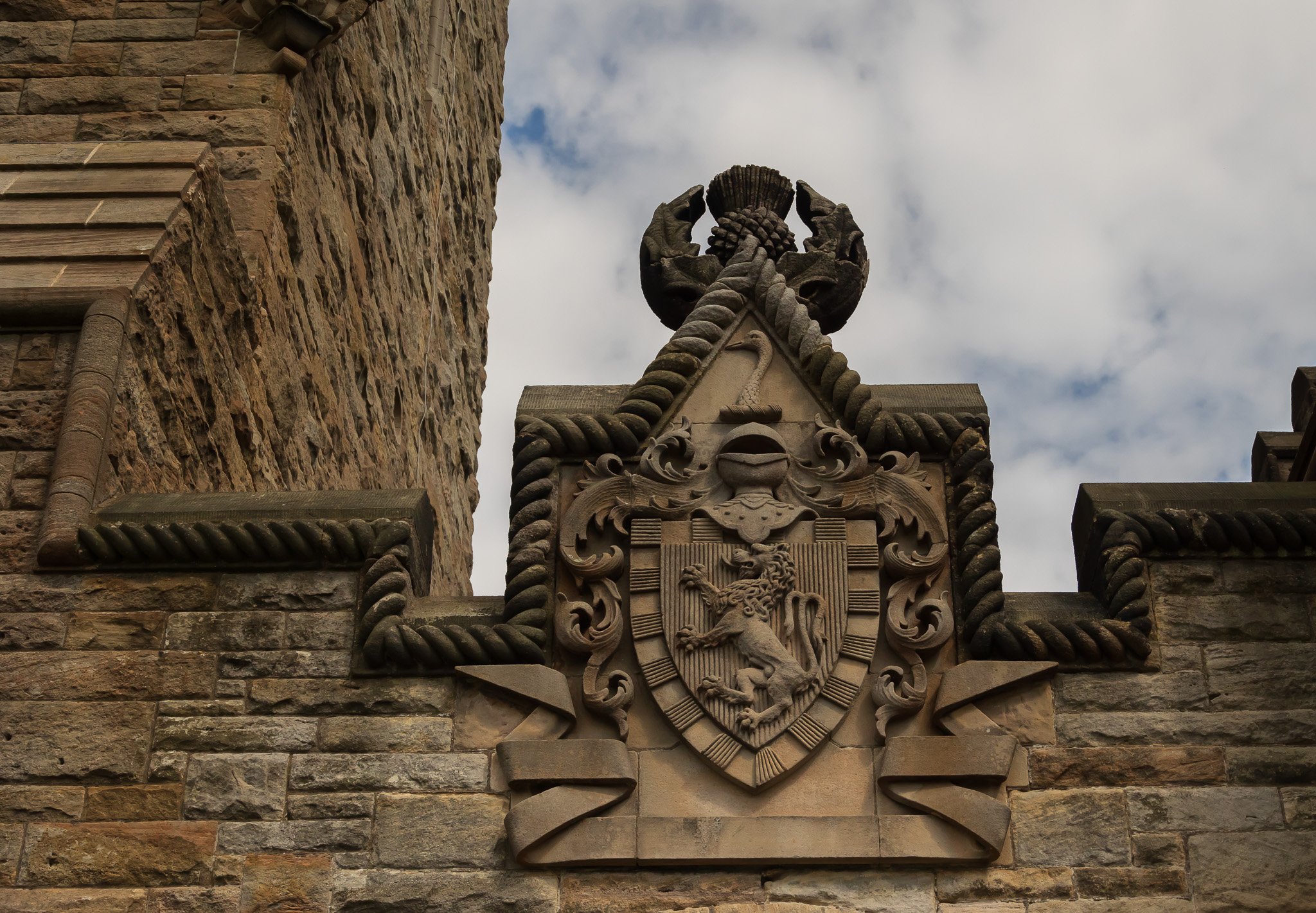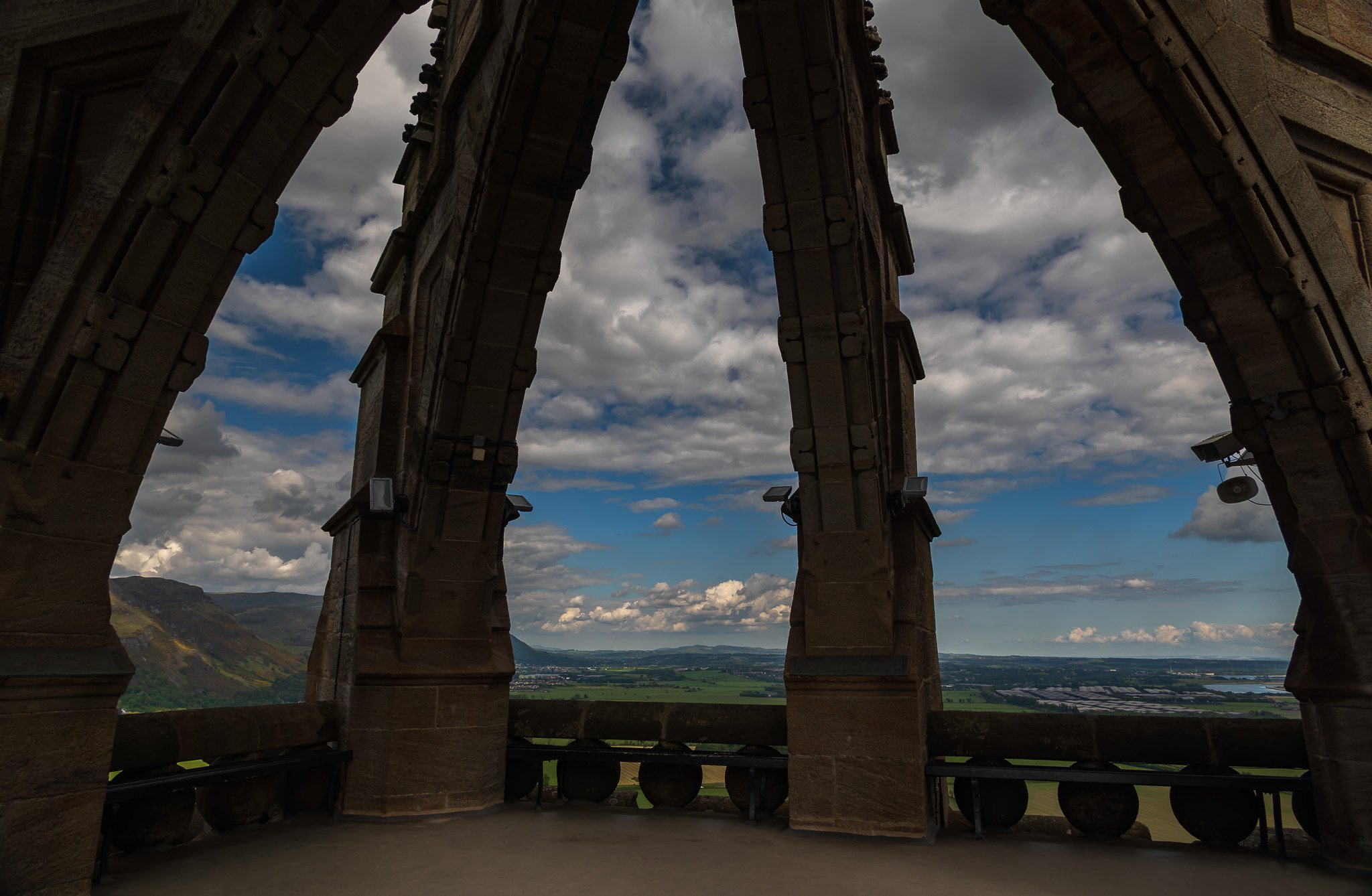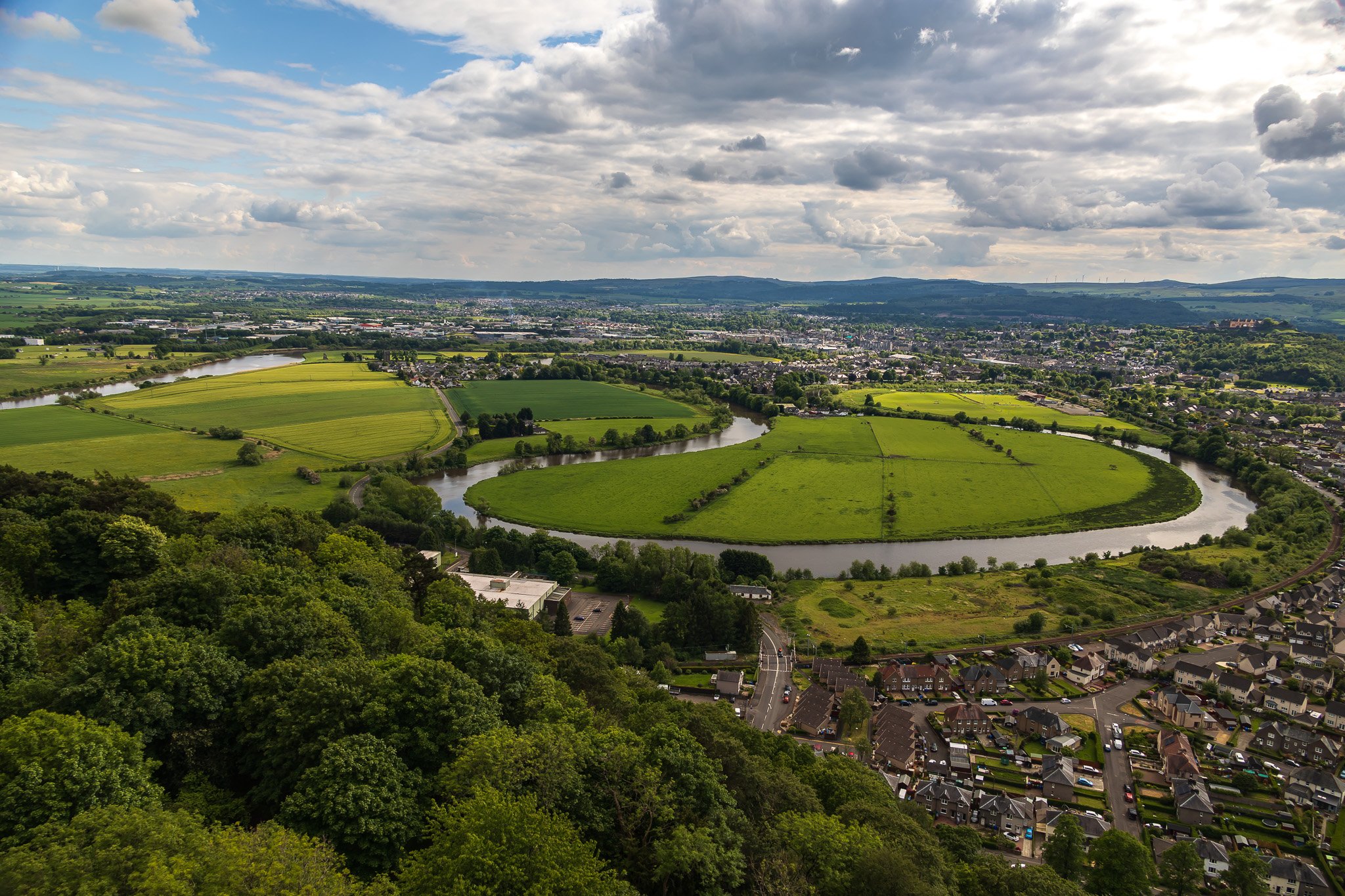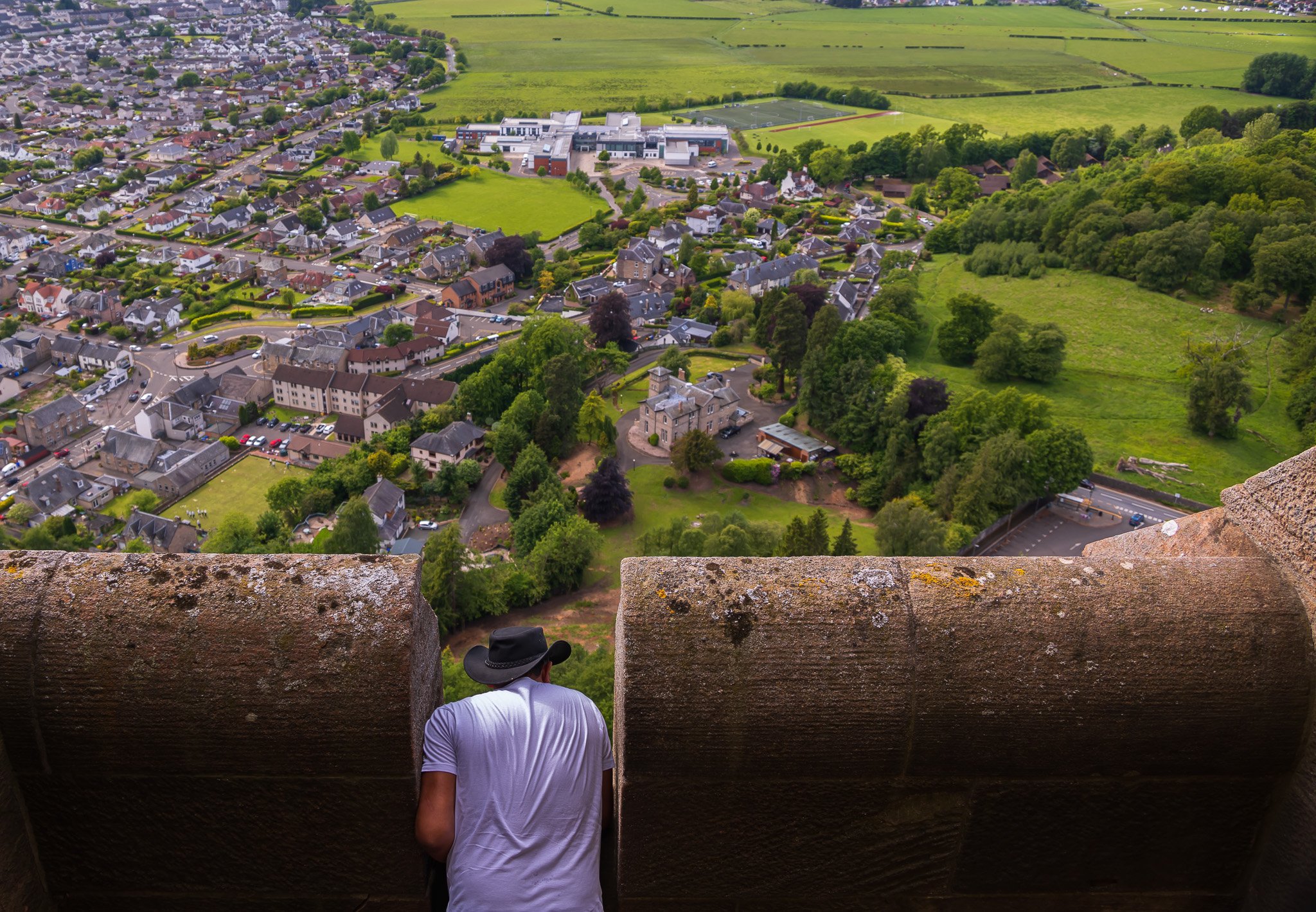Upon leaving Stirling, Karl writes: “... passing over the bridge, erected on the same site as the old bridge, which was the scene of the great battle between Wallace and the English in 1207, to the north a hill is approached. On which stands the beautiful Wallace monument, 220 feet high, which took eight years to build at a cost of £13,400. Above the entrance stands a statue of Sir William and in one of the halls, in a glass case, is the sword once wielded by the great chieftain and in the same hall are busts of some famous Scotchmen, King Robert the Bruce, Burns, Scott, etc.”
So much of what I know about William Wallace (1272-1305) is not from any formal history lessons in school but from Mel Gibson's portrayal of the Scottish Freedom fighter in Braveheart. You know the scene, dear reader, Mel, with his face painted half blue, riding his horse wearing his tartan kilt exposing his bare knees. At this time, your mind may have started to wonder– “is it true what a Scottsman doesn’t wear beneath his kilt?” –– but you return back to the storyline when Mel’s voice — with his Scottish lilt — brings you to William Wallace:
“Run, and you'll live... at least a while. And dying in your beds, many years from now, would you be willin' to trade ALL the days, from this day to that, for one chance, just one chance, to come back here and tell our enemies that they may take our lives, but they'll never take... OUR FREEDOM!”
The National Wallace Monument is a landmark in Stirling. Getting there is a 25-minute walk from the parking lot along the “Wallace Way” path. It’s a lovely trail and serves as a history lesson with wood sculptures about the city of Stirling from the ice age to 1869, when the Monument was built.
At the end of the trail, you arrive at the tower. It’s 220 feet (67m) high and can’t be missed. Karl reported that it took eight years to build, although the “official” cost is estimated to be £15,000.
There is a modest admission fee of around £10 to enter the Monument and a not-so-modest amount of stairs to start climbing. Wallace may have conquered the English, but I needed to conquer all 246 steps up a spiral staircase. Thankfully the ascent is punctuated with three exhibits along the way that also serve as rest stops.
The first stop is the Hall of Arms to learn about Sir William Wallace and see the Wallace sword enclosed in glass. There’s conjecture if this is Wallace’s sword, but undoubtedly, this 1.68m long sword, weighing approximately 3kg, is from that time.
Then up more stairs to the next exhibit, the Hall of Heroes. A room filled with the busts of illustrious Scots, poets, scientists, and writers now forever immortalized in marble. The first bust was installed in 1886, and by the time Karl visited in 1901, there were 16 busts, all men*. Interestingly, by the time I arrived 120 years later, only two more busts had been added to the Hall. I’m glad to report that the additional two are Scottish heroines. In 2019, Mary Slessor and Maggie Keswick Jencks were added to the Hall, appreciating that women have made their mark on Scotland too.
The third resting place, I mean exhibit, is the Royal Chamber detailing the events of the Battle of Stirling Bridge, offering more insight into the weapons used and the historical landmarks of the Stirling landscape. Then, finally, the pinnacle of the monument, the ‘Crown’, the open observation platform with a 360-degree panoramic view of Stirlingshire.
I inquired if any records existed of guests visiting the Wallace Monument back in 1901. Sadly there was no documentation. But apart from my assumption that Karl’s heart rate at the Crown spire was less elevated than mine — thanks to his fitness level from all that biking — our experiences were identical.
* Robert the Bruce, George Buchanan, John Knox, Allan Ramsay, Robert Burns, Robert Tannahill, Adam Smith, James Watt, Sir Walter Scott, William Murdoch, Sir David Brewster, Thomas Carlyle, Hugh Miller, Thomas Chalmers, David Livingstone, and W. E. Gladstone.
In case you’ve missed them, click here for more Karl Chronicles
The Karl Journey is now registered as an official expedition with the Royal Geographical Society





